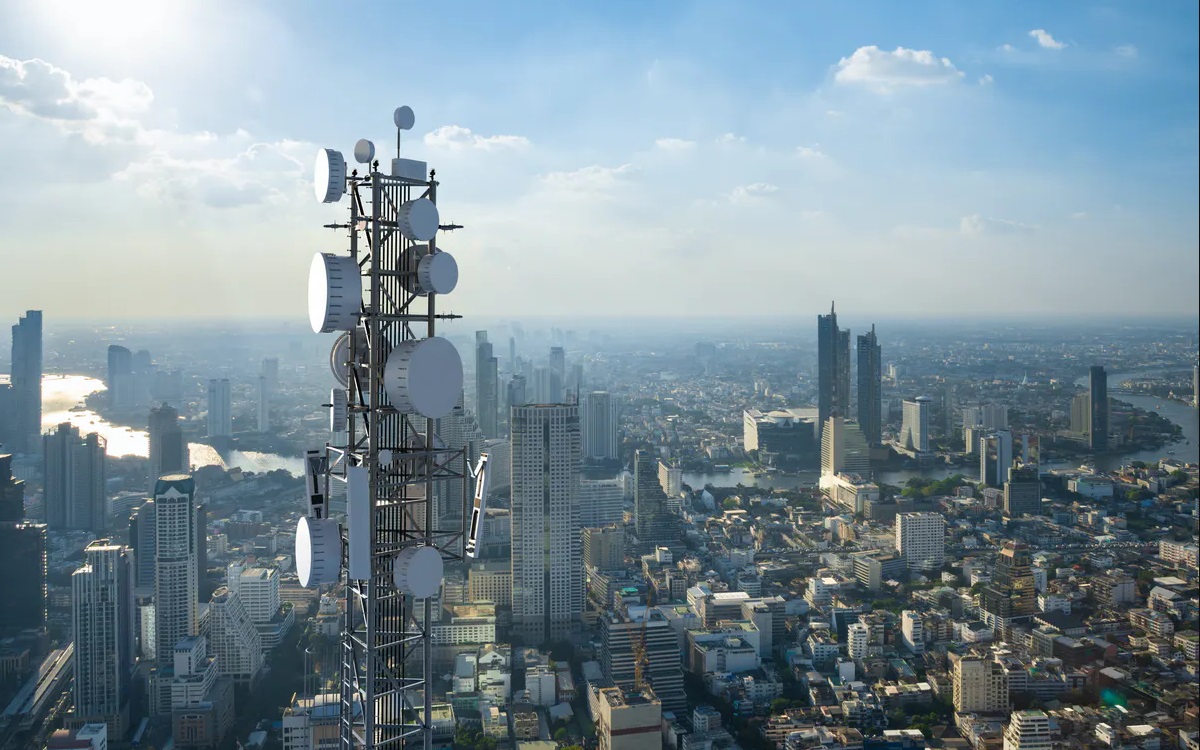Get to know the giant cell tower and what is it used for
Nowadays there are more than 307,000 cell towers across the United States alone. The latter are usually placed on top of a building or along the road. But have you ever been curious about what these tall towers exactly are? How are they built? How do they work? Today we will answer all your questions throughout the following article.
What is a cell tower?
A cell tower, also called “a cell site”, is a cellular-enabled mobile site with antennas and electric communication equipment. The tower equipment usually consists of a radio mast, transmitters, receivers, additional power supplies for backup, and much more.
In conclusion, a cell tower is built by a wireless carrier or a tower company for the purpose of cellular network support and service area expansion. It also helps facilitate the signal reception of all wireless communication devices, whether it be handheld mobile phones, radios, or televisions.
How do cell towers work?
Whenever you make a call, your phone will emit electromagnetic radio waves, called “radio frequency” (or RF energy). Then, the nearest antenna in the cell tower will receive that signal and transmit it to a switching center. This process will allow your device to be connected to another mobile device or to access a telephone network. Surprisingly, this whole process can be done in mere seconds!
How many types of cell towers are there?
The tower is of course the main part of the site and it can be divided into 4 types due to different characteristics as following:
1. Monopole tower
Have you ever seen a single steel or concrete tube tower? This one is called a monopole tower. In general, its height does not exceed 50 meters and it needs only one foundation. Furthermore, the antennas are always attached to the exterior.
2. Lattice tower
Also known as a self-supporting tower, it normally features 3-4 sides with similar shaped bases. As this kind is the best for flexibility, it is usually used in heavy loading conditions.
3. Guyed tower
The third type is considered the most affordable one (for construction costs). The higher it is, the cheaper! This is the reason why the guyed tower is usually 100 meters tall or greater. Moreover, it is usually connected by guy wires that help anchor and support it. Despite cost-effectiveness, this type of tower requires the largest land area among these 4 types.
4. Stealth tower
A stealth tower is the most expensive type among all since the latter needs additional materials to conceal its imposing structure. As a result, it is often requested by councils or owners who prefer pleasant cityscape. However, the disadvantage is that it doesn’t provide an advantageous network capacity compared to the other structure types.
Do carriers own any part of a cell tower?
As we mentioned above, a cell site is combined with many parts. Most are actually provided by individual wireless carriers or networks to enhance the network capacity. Therefore, here’s a list of everything you can find on a cell site:
- Antennas: In one tower, there are always multiple antennas mounted on a head frame. The total number of antennas isn’t fixed. Some cell sites require only a few attached antennas while some have about 15 of them per carrier. It depends on the antenna performance, technology, coverage as well as capacity requirement.
- Equipment: The standard equipment on cell towers often consists of transceivers and other supporting technology which are usually installed in cabinets or shelters. Furthermore, each wireless carrier also has its way to protect the equipment, such as using a concrete pad for outdoor cabinets or prefabricated equipment shelters.
- Access: Cell towers require access by the carriers for 2 reasons. First, it is required for the initial installation, and the second reason is for ongoing maintenance including repair activities. Sometimes, a carrier may need a separate track to the cellular tower site.
- Utilities: The utilities are indeed essential for the cell sites and they will be used by the carriers. Generally, each carrier has a direct electrical run to the tower as well as phone service.
How far should each cell tower stand next to each other?
Normally, a cell tower service can cover around 45 miles. However, the range between them has no exact number because it actually depends on various factors:
- How tall is the antenna over the surrounding area?
- What is the directive pattern of the antenna array on that site?
- How much frequency of the signal is used?
- What is the transmitter power rate?
- Is there any building or vegetation nearby? Because it may absorb or reflect the radio frequencies.
- Consideration of local geographical features, meteorological conditions, and other regulatory factors.
Conclusively, the cell tower is undeniably extremely important for our smartphones and other wireless devices. Therefore, if you have a problem or difficulty with your cellular network, check first if there are any obstructing obstacles, or perhaps your location is just too far from the site.

